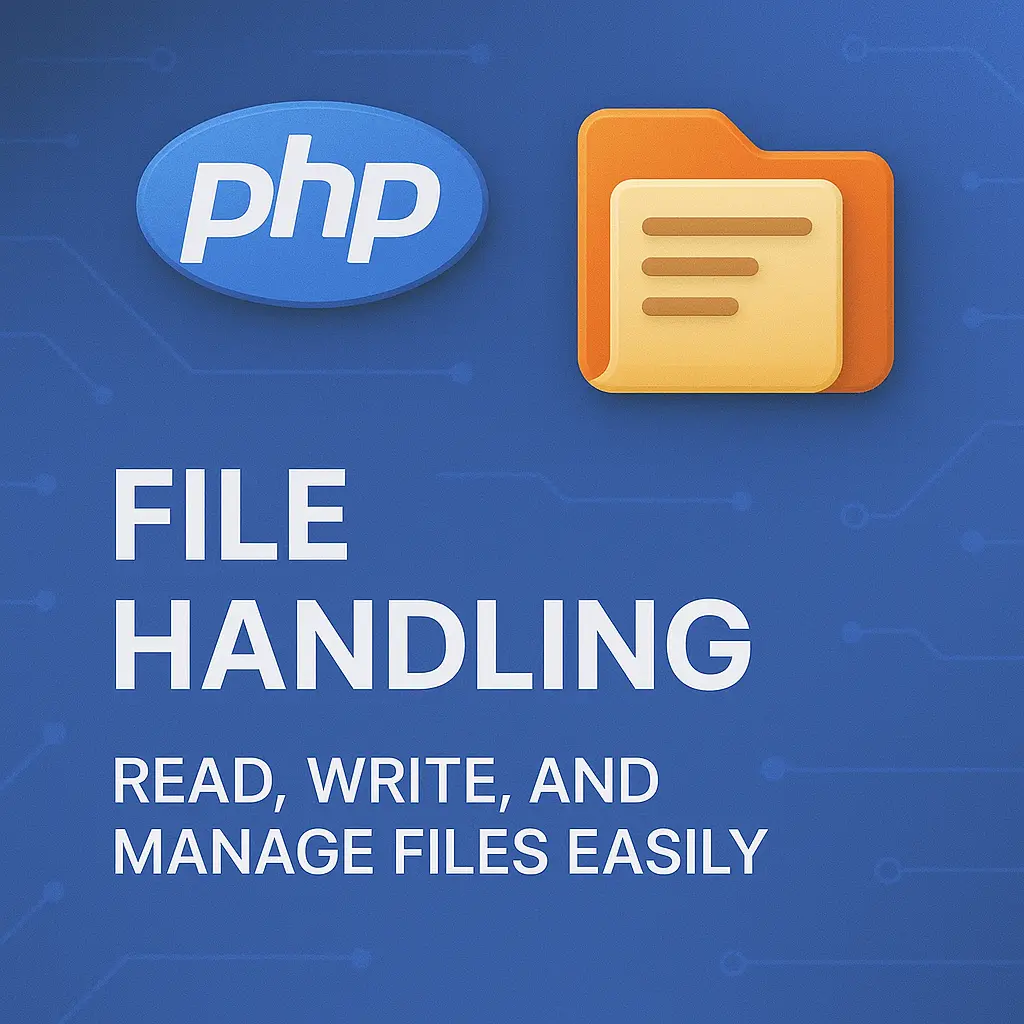In this comprehensive guide, we’ll explore the intricacies of file handling in PHP, covering techniques for opening and closing files, as well as reading from and writing to them. Through detailed explanations and practical code examples, you’ll gain a solid understanding of file handling concepts and learn how to leverage them effectively in your PHP projects.
Opening and Closing Files
PHP provides several functions for opening and closing files, allowing developers to establish file handles and perform operations on them.
Opening a File
To open a file for reading or writing, you can use the fopen() function, which takes two parameters: the file path and the mode (read, write, append, etc.).
<?php
$file = fopen("example.txt", "r") or die("Unable to open file!");
?>
In this example, we use fopen() to open a file named “example.txt” for reading (“r” mode). If the file cannot be opened, an error message is displayed.
Closing a File
After performing operations on a file, it’s important to close it using the fclose() function to release system resources.
<?php
fclose($file);
?>
In this example, we use fclose() to close the file handle $file after reading or writing operations have been completed.
Reading and Writing Files
Once a file is opened, you can perform read and write operations using various functions provided by PHP.
Reading from a File
To read from a file, you can use functions such as fgets(), fgetc(), or fread().
<?php
// Read file line by line using fgets()
while (!feof($file)) {
echo fgets($file) . "<br>";
}
?>
In this example, we use fgets() inside a loop to read each line from the file until the end of the file (feof()).
Writing to a File
To write to a file, you can use functions such as fwrite() or file_put_contents().
<?php
// Write content to a file using fwrite()
$content = "Hello, world!";
fwrite($file, $content);
?>
In this example, we use fwrite() to write the content “Hello, world!” to the file handle $file.
Best Practices
Handle Errors Gracefully: Check for errors when opening files and handle them gracefully using techniques such as error handling or exception handling.
Close Files After Use: Always close files using fclose() after performing read or write operations to release system resources and prevent memory leaks.
Use Appropriate Modes: Choose the appropriate mode (“r”, “w”, “a”, etc.) when opening files to ensure that operations are performed correctly and safely.
Conclusion
File handling is a fundamental aspect of web development that allows applications to interact with files stored on the server or the local file system. In this guide, we explored the intricacies of file handling in PHP, covering techniques for opening and closing files, as well as reading from and writing to them. By mastering these concepts and following best practices, you can leverage the power of file handling to build robust and efficient PHP applications that effectively manage and manipulate files.
<?php
// Example PHP code demonstrating file handling
$file = fopen("example.txt", "r") or die("Unable to open file!");
// Read file line by line using fgets()
while (!feof($file)) {
echo fgets($file) . "<br>";
}
// Close the file
fclose($file);
// Write content to a file using fwrite()
$file = fopen("example.txt", "w") or die("Unable to open file!");
$content = "Hello, world!";
fwrite($file, $content);
fclose($file);
?>
This PHP script demonstrates file handling operations, including opening a file for reading, reading its contents line by line, closing the file, opening the same file for writing, writing content to it, and closing it again. By following these examples and best practices, you can effectively handle files in your PHP applications and perform various file operations with ease.






